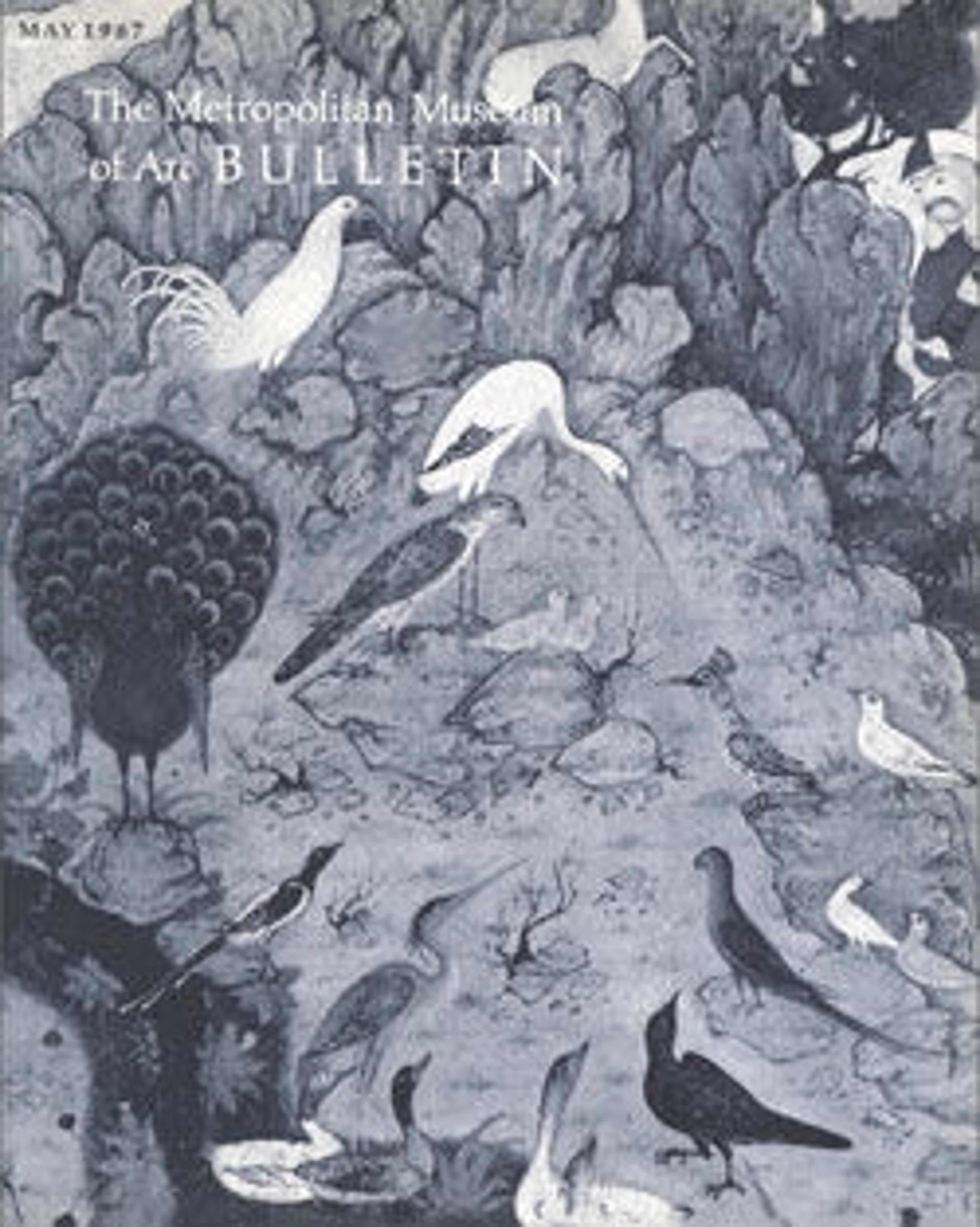"Shaikh Mahneh and the Villager", Folio 49r from a Mantiq al-Tayr (Language of the Birds)
This painting illustrates a story that stresses the importance of the quest (talab). The story is as follows: Shaikh Mahneh (Abu Sa'id Mihna'i, 967–1049), a famous shaikh of Khorasan, wandered in the wilderness in a state of depression. He saw a peasant in the distance cultivating wasteland with an ox-plow. The peasant emitted light. Shaikh Mahneh approached the peasant and told him of his painful condition. The peasant advised him to be patient and pursue the endless quest.
This illustration depicts the conversation between the peasant and Shaikh Mahneh in the foreground. On the other hand, a group of men weighing melons and a dervish sleeping at the base of a tree have no connection to the text itself. The reason for the inclusion of this scene awaits further research.
This illustration depicts the conversation between the peasant and Shaikh Mahneh in the foreground. On the other hand, a group of men weighing melons and a dervish sleeping at the base of a tree have no connection to the text itself. The reason for the inclusion of this scene awaits further research.
Artwork Details
- Title:"Shaikh Mahneh and the Villager", Folio 49r from a Mantiq al-Tayr (Language of the Birds)
- Author:Farid al-Din `Attar (Iranian, Nishapur ca. 1142–ca. 1220 Nishapur)
- Date:1487
- Geography:Made in present-day Afghanistan, Herat
- Medium:Opaque watercolor, silver, and gold on paper
- Dimensions:H. 7 3/4 in. (19.7 cm)
W. 5 3/4 in. (14.6 cm) - Classification:Codices
- Credit Line:Fletcher Fund, 1963
- Object Number:63.210.49
- Curatorial Department: Islamic Art
More Artwork
Research Resources
The Met provides unparalleled resources for research and welcomes an international community of students and scholars. The Met's Open Access API is where creators and researchers can connect to the The Met collection. Open Access data and public domain images are available for unrestricted commercial and noncommercial use without permission or fee.
To request images under copyright and other restrictions, please use this Image Request form.
Feedback
We continue to research and examine historical and cultural context for objects in The Met collection. If you have comments or questions about this object record, please contact us using the form below. The Museum looks forward to receiving your comments.
